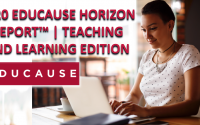
The CIO Agenda for a Decade of Converging Curves (Plus Cliffs and Clouds)
Converging trends and curves will widely affect many colleges and universities in this decade, offering an opportunity for innovation and a broad rethinking of institutional approaches for, and uses of, information technology. EDUCAUSE Review
















